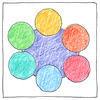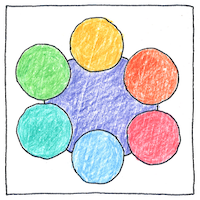Jean Piaget
psychology

|
Child development
Whereas Alfred Binet watched children to see when they would perform as expected, Jean Piaget watched children to see what their mistakes could teach us.
Stages
A child first addresses the world by grasping things and putting them in his mouth. Next, magic thinking dominates his world and he sees himself as the center of it. Thirdly, he begins to think logically but only about concrete things in front of his nose. Finally, he develops abstract thought and knows he is the smartest thing that ever was.
Differences
A small boy grabs a toy truck from his sister and hits her in the head with it. The girl, as she grows up, learns how to get other people to do things for her. The boy would rather do things himself because he is too shy to ask for help. The girl learns foreign languages with ease; the boy readily grasps concepts in math. Each child becomes even more different and loves the other like brother and sister.



Piaget’s four stages of a child’s development are the sensorimotor stage, from birth to when they begin to speak about age 2, the preoperational stage, between ages 2 to 7, the concrete operational stage, between ages 7 and 11, and the formal operational stage, from adolescence to adulthood. These are at best useful generalizations. Different children develop different skills in different domains (logic versus language, for example) at different rates, sometimes by chance.
See also in The book of science:
Readings in wikipedia: